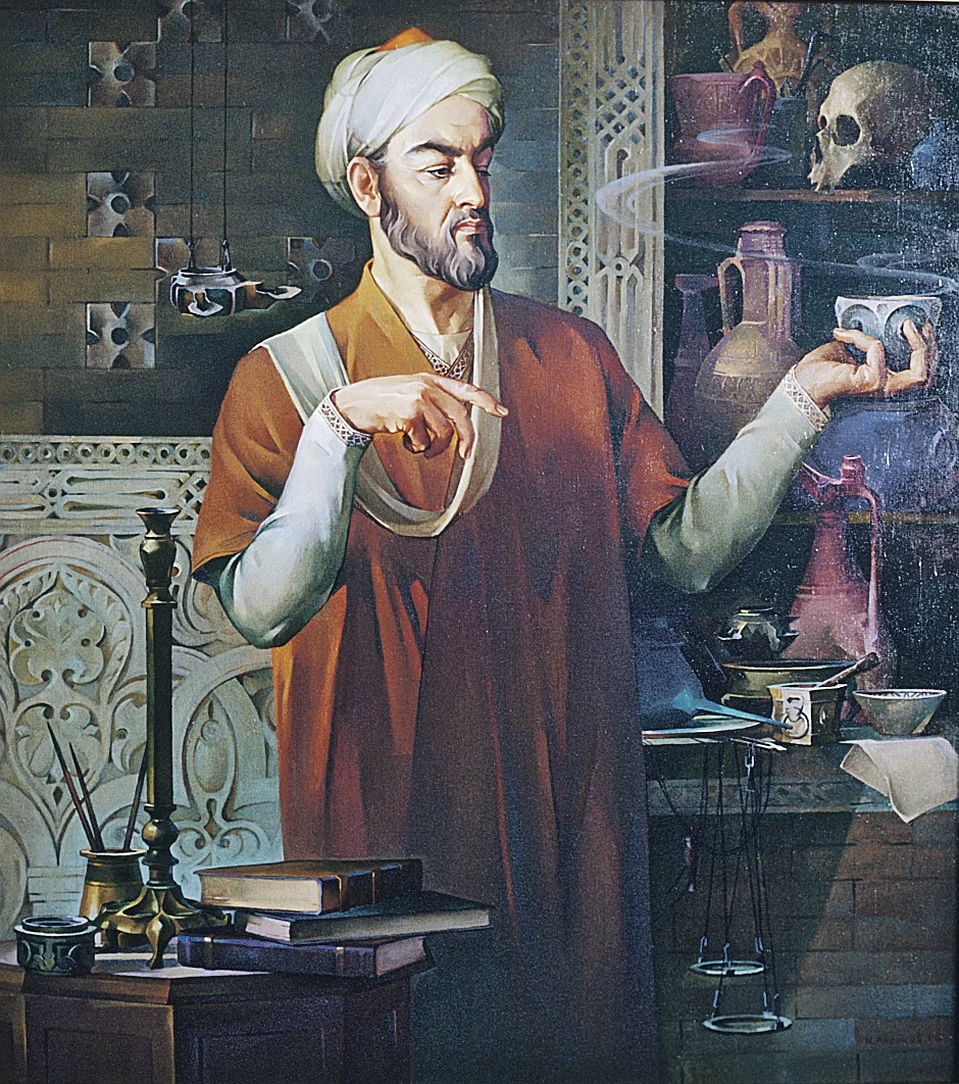“Idleness and holidays not only give rise to ignorance,
they are the reasons of illness”. "
(Abu Ali ibn Sina)
For more than ten centuries, the name of Abu Ali ibn Sina has been on a par with immortal thinkers and scientists around the world. He is the largest representative of the leading figures and educators of Central Asia. A naturalist and a mathematician, a philosopher and a physician, a literary critic and a poet - and these are not just a few people, this is one person!

The contribution to the science and culture of Ibn Sina is undeniable. He possessed encyclopedic knowledges and made discoveries in various sciences. The valuable heritage of Abu Ali ibn Sina occupies a crucial place in the history of the development of world civilization.
The small village of Afshana located 30 km from Bukhara is the birthplace of Ibn Sina. A boy named Hussein was born here in 980. It is known that from an early age the future scientist showed the extraordinary abilities and talents. Father Abdullah took five-year-old Hussein to Bukhara, so that his son could receive a good education. There, Hussein learned the Arabic language, and by the age of 10, he knew the Koran by heart. The boy successfully mastered such sciences as arithmetic, Muslim law, geometry.
In his autobiography, the scientist recalled the arrival in Bukhara of the famous scientist Abu Abdullah Natili, who gave him lessons in logic and philosophy. Starting from the age of 14, Hussein began to study astronomy, metaphysics, geometry, and then medicine on his own. At 16, the young man managed to master the science of medicine so thoroughly and deeply that eminent doctors of that time asked his advice. Once, the Emir of Bukhara asked for his help.
Ibn Sina, with great zeal and passion, mastered geometry, astronomy, and music all night long. Most of all he loved medicine. He knew the works of ancient Greek philosophers and scientists, among which are Hippocrates, Plato and Aristotle.
Ibn Sina wrote his philosophical work “Investigations on the spiritual forces” at the age of 17. Who would have thought that a young man could so maturely talk about hidden meanings? At the age of 21, the scientist wrote the book “Al-Majmul”, in which the author shared his thoughts on poetics, rhetoric, and other sciences.
In 1005, Ibn Sina moved to Khorezm. Seven years later, he moved to Jurjan, then to Khorasan and Iran. In Dzhurjan Ibn Sina began his work on the famous multi-volume work “The Canon of Medical Science”. Most of all, Ibn Sina wanted the science of healing to be widely popularized. His work is still relevant nowadays. Doctors and scientists from all over the world are turning to the scientific conclusions of Ibn Sina. After all, his ideas are relevant even today. For example, the scientist wrote that it was much more important to prevent a disease than to cure it:
There are many symptoms,
I have described them in detail before,
And again I repeat: treat the reasons;-
This is the main principle of our medicine.
During his lifetime, Ibn Sina became a celebrity. In Europe, he was called Avicenna (Latinized pronunciation of his name). Avicenna left a huge legacy: works on medicine, books on logic, physics, mathematics and other sciences. He wrote more than 450 works, and only about 240 of them reached us.
Ibn Sina died on June 24, 1037. Undoubtedly, the heritage of Avicenna is a valuable gift for generations not only today, but for all subsequent generations, at least a few centuries in advance.







Working hours: 9:00 AM - 6:00 PM, Mon-Fri
For any questions
ПОЛЬЗОВАТЕЛЬСКОЕ СОГЛАШЕНИЕ
1. Определение
Настоящее Пользовательское соглашение (далее — Соглашение) является Публичной офертой в соответствии со статьёй 367 Гражданского кодекса Республики Узбекистан от 21.12.1995 (https://lex.uz/ru/docs/111181#162763) и регулирует порядок использования материалов и Сервисов сайта Государственного унитарного предприятия «Национальный PR-центр» (далее — Предприятие), размещённого на веб-сайте и поддоменах Национального Туристического Информационного Центра: https://uzbekistan.travel/ (далее — Сайт).
Посетитель и (или) Пользователь подтверждает, что ознакомлен, полностью и безоговорочно принимает все условия настоящего Соглашения и обязуется их соблюдать.
Использование Сайта Пользователем означает полное принятие данного Соглашения «как есть» в форме акцепта.
Соглашение вступает в силу с момента посещения любой страницы Сайта и (или) регистрации на Сайте и действует бессрочно во время пользования Сервисами Сайта.
Настоящее Соглашение обязательно для исполнения всеми Посетителями и Пользователями без каких-либо изъятий и дополнительных согласований.
Пользователь обязуется самостоятельно проверять актуальную редакцию Соглашения на Сайте перед использованием Сервисов.
2. Предмет Соглашения
Предметом настоящего Соглашения являются правила использования материалов Сайта и предоставление Посетителю и (или) Пользователю возможности использования Сервисов Сайта.
Предприятие является правообладателем исключительных прав на Сайт в целом и на его составные части, включая все виды контента: логотипы, товарные знаки, тексты, статьи, аннотации, иллюстрации, фотографии, графику, аудио- и видеофайлы, пользовательские интерфейсы, дизайн, структуру, программы, базы данных.
Я прочитал(а) и соглашаюсь с условиями использования сайта и политикой конфиденциальности.
